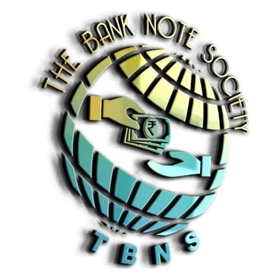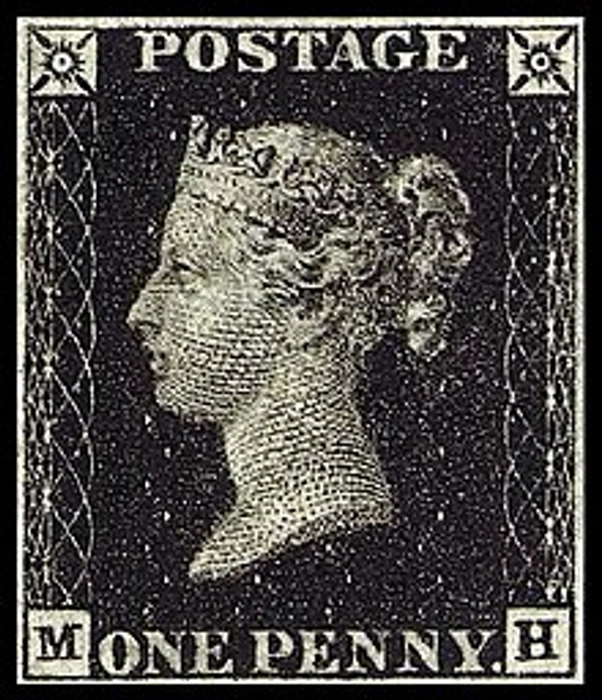Step back in time and discover the fascinating origins of the world's first postage stamp, the Patna Copper Ticket 1774. In this article, we delve into the rich history and significance of this remarkable artifact, shedding light on its creation and impact on the postal system.
With a keen eye for detail, the Patna Copper Ticket was crafted with precision, featuring intricate designs and inscriptions that represented its value and purpose. As we explore its journey from conception to implementation, we unravel the innovative thinking and ingenuity behind this revolutionary concept.
Not only did the Patna Copper Ticket pave the way for the modern postal system, but it also revolutionized communication and created a sense of connectivity across vast distances. Its creation marked a turning point in history, demonstrating the power of a simple piece of paper to transcend borders and connect people from all walks of life.
Join us as we peel back the layers of time and delve into the captivating story behind the Patna Copper Ticket 1774, a seminal moment in the evolution of global communication.
Historical significance of the world's first postage stamp
The Patna Copper Ticket, issued in 1774, holds a monumental place in the annals of postal history as the world’s first postage stamp. Before its advent, the concept of pre-paid postage was virtually non-existent, with postal services relying heavily on the recipient to pay for delivery. The introduction of the Copper Ticket not only revolutionized how mail was sent and received but also laid the groundwork for the modern postal systems we recognize today. It was a significant shift from a system that was often cumbersome and inconsistent to a more efficient and reliable method of communication.
This innovative mechanism allowed for greater accessibility to postal services, especially in regions where communication was previously limited. The Copper Ticket enabled individuals to send letters and packages without the uncertainty of payment upon delivery, which was a common cause of disputes. With the introduction of a pre-paid stamp, the process became more straightforward and trustworthy, fostering an environment where communication could flourish. This ultimately led to increased social and economic interactions among communities, enhancing the flow of information and goods across distances.
Moreover, the Patna Copper Ticket signifies a pivotal moment in the history of governance and administration. It showcased the British East India Company's willingness to adapt and implement systems that could facilitate more organized and efficient governance in its colonies. By acknowledging the need for a structured postal system, the Copper Ticket represented a forward-thinking approach that would influence postal reforms globally. Its establishment heralded a new era in communication, emphasizing not just the importance of postal services but also the necessity of connecting people across geographical divides.
The story behind the creation of the Patna Copper Ticket
The creation of the Patna Copper Ticket was a response to the growing demand for efficient communication during a time of significant political and economic change in India. As the British East India Company expanded its influence, the need for a reliable postal system became evident. The existing methods of sending correspondence were slow and often unreliable, which hampered trade and diplomatic relations. Recognizing these challenges, the Company sought innovative solutions to streamline communication and improve the overall efficiency of its operations.
The design of the Patna Copper Ticket was attributed to the ingenuity of British officials who were keen to establish a more orderly postal system in India. They envisioned a system that would not only facilitate quicker communication but also generate revenue for the Company. The ticket itself was made of copper, a durable material that symbolized the ticket’s value and purpose. It was inscribed with distinctive markings that denoted its monetary worth, making it easily recognizable and difficult to counterfeit. This foresight ensured that the ticket could be used reliably across the burgeoning postal network.
Once implemented, the Copper Ticket was met with mixed reactions. While some welcomed the ease of sending mail, others were skeptical about this new form of currency. Many were unfamiliar with the concept of pre-paid postage, leading to initial confusion. However, as the system began to prove its efficiency and reliability, acceptance grew. The Patna Copper Ticket became a symbol of progress, embodying the transformative changes that were sweeping through the postal service and laying the foundation for future innovations in communication.
Characteristics and design of the Patna Copper Ticket
The Patna Copper Ticket is celebrated not only for its historical importance but also for its unique design and characteristics. Crafted from copper, this ticket features intricate engravings that reflect the artistic sensibilities of the time. Its design includes ornate borders and detailed inscriptions that convey its legitimacy and purpose. The ticket prominently displays its face value, which informed users of its worth, essentially functioning as a form of currency for postal services. This dual function of serving as both a postage stamp and a token of value was revolutionary for its time.
One of the most notable aspects of the Patna Copper Ticket is its size and shape. Unlike modern postage stamps, which are typically rectangular, the Copper Ticket is larger and more robust, reflecting its material composition. The tactile nature of the copper added to its distinctiveness, making it a tangible representation of the postal system's evolution. Additionally, the ticket featured a specific design motif that resonated with the cultural context of the 18th century, blending British and Indian artistic influences, thus marking it as a product of its diverse environment.
In terms of functionality, the Patna Copper Ticket was designed for ease of use. Its inscriptions and designs were not merely ornamental; they served practical purposes, helping postal workers identify the value and authenticity of the ticket quickly. This was crucial in maintaining the integrity of the postal system, as it reduced the likelihood of fraud. Overall, the characteristics and design of the Patna Copper Ticket reflect a thoughtful approach to creating a revolutionary tool for communication, one that was both aesthetically pleasing and functionally effective.
Uncovering the value and rarity of the Patna Copper Ticket
The Patna Copper Ticket is not only a historical artifact but also a highly sought-after item for collectors and historians alike. Its rarity stems from the fact that very few original tickets have survived the passage of time. This scarcity, combined with its significance as the world's first postage stamp, contributes to its immense value in the realms of philately and numismatics. Collectors are particularly drawn to the ticket due to its unique story and the pivotal role it played in shaping postal history, making it a prized possession in any collection.
Determining the value of the Patna Copper Ticket involves several factors, including its condition, historical context, and provenance. Tickets that are well-preserved and exhibit minimal wear are considered more valuable than those that show signs of age or damage. Furthermore, the ticket's history—how it has been preserved and where it has been located—adds to its allure. Documentation proving its authenticity and historical significance can significantly enhance its market value. As such, the ticket is often appraised by experts in the field who can accurately assess its worth based on these criteria.
The financial implications of owning a Patna Copper Ticket are considerable. Auctions featuring this unique artifact can attract significant bids from collectors eager to add such a landmark piece to their collections. The ticket's value continues to appreciate over time, reflecting an ongoing interest in historical artifacts and the stories they tell. As awareness of the Patna Copper Ticket grows, so does its desirability, making it an important item not just for collectors, but also for those interested in the broader narratives of communication and connectivity in human history.
How the Patna Copper Ticket shaped the future of postage stamps
The introduction of the Patna Copper Ticket marked a turning point in the evolution of postage stamps, influencing postal systems around the globe. Its revolutionary concept of pre-payment for postal services paved the way for the development of standardized postage systems, which would emerge in various forms across different countries in the following decades. By demonstrating the practicality and efficiency of pre-paid postage, the Copper Ticket inspired other nations to adopt similar practices, ultimately leading to the establishment of postal reforms worldwide.
The principles laid out by the Patna Copper Ticket were further refined with the introduction of the Penny Black in the United Kingdom in 1840, which is often credited as the first adhesive postage stamp. The innovation of the Copper Ticket provided a foundational model upon which subsequent postage stamps were built. Its design, usage, and implementation informed the characteristics of future stamps, establishing norms such as standard sizes, adhesive backing, and the representation of values and images that are now commonplace in modern postage stamps.
Moreover, the Patna Copper Ticket's influence extended beyond just design and implementation; it also shifted societal attitudes towards mail and communication. It fostered a culture of connectivity, where sending and receiving correspondence became more accessible and commonplace. The idea of pre-paid postage made it easier for people to communicate across distances, facilitating not just personal correspondence but also commercial transactions and governmental communications. This spirit of connectivity that the Patna Copper Ticket embodied continues to resonate in today's highly interconnected world, highlighting its lasting impact on communication practices.
Collecting and preserving the Patna Copper Ticket
As a significant piece of postal history, the Patna Copper Ticket has attracted the attention of collectors and historians alike. Collecting such items requires a deep appreciation for their historical context and cultural significance. Enthusiasts often seek tickets that not only hold value but also tell a story about the evolution of postage and communication. The Copper Ticket, with its unique place in history as the first postage stamp, offers a profound narrative that enriches any collection.
Preserving the Patna Copper Ticket is crucial for maintaining its integrity and value. Proper storage conditions are essential to prevent deterioration caused by environmental factors such as humidity, temperature fluctuations, and exposure to light. Collectors often employ specialized materials, such as archival-quality holders and acid-free storage boxes, to safeguard their artifacts. Additionally, handling techniques are vital; collectors are encouraged to wear gloves when touching the ticket to minimize the transfer of oils and contaminants that could damage its surface over time.
The community surrounding the collection of historical artifacts, including the Patna Copper Ticket, has grown significantly. Philately and numismatics organizations often host events, exhibitions, and discussions that not only promote awareness but also provide a platform for collectors to share their knowledge and passion. These gatherings foster a sense of belonging among enthusiasts and help educate the public about the importance of preserving historical artifacts. By championing the Patna Copper Ticket and other similar items, collectors play a vital role in ensuring that such pieces of history remain appreciated and preserved for future generations.
Other notable postage stamps in history
Throughout history, numerous postage stamps have emerged, each with its own unique story and significance. Beyond the Patna Copper Ticket, stamps like the Penny Black from the United Kingdom and the Mauritius "Post Office" stamps are noteworthy examples. The Penny Black, issued in 1840, is recognized as the world’s first adhesive postage stamp, introducing the concept of a stamp that could be affixed to mail. Its introduction revolutionized postage by making it more accessible and efficient, similar to the impact of the Patna Copper Ticket.
Another remarkable stamp is the Mauritius "Post Office" stamp, issued in 1847, which is considered one of the rarest and most valuable stamps in the world. Only a few examples exist, making it a coveted item among collectors. The story of the Mauritius stamp highlights the dynamic nature of postal history and the various factors that contribute to a stamp's value, including rarity, historical context, and design. These stamps, like the Patna Copper Ticket, have shaped the evolution of postage and continue to fascinate collectors and historians alike.
Additionally, the introduction of commemorative stamps has added a rich layer to the world of philately. These stamps celebrate significant events, milestones, or individuals, creating a tangible connection to history. For example, the 1969 Apollo 11 stamp commemorated the historic lunar landing, while the 2002 "Heroes of 9/11" stamp honored the bravery of first responders during the September 11 attacks. Such stamps provide a glimpse into societal values and historical moments, showcasing how postage stamps serve as both functional objects and cultural artifacts that reflect the world in which they were created.
The impact of the Patna Copper Ticket on philately and numismatics
The introduction of the Patna Copper Ticket has had a profound impact on the fields of philately and numismatics. Philately, the collection and study of postage stamps, has been enriched by the narrative of the Copper Ticket as the first of its kind. Collectors view it not just as a mere artifact but as a representation of the evolution of communication. Its rarity and historical significance have made it a focal point for philatelic exhibitions, discussions, and literature, inspiring a deeper appreciation for the role of postage in societal development.
In numismatics, which encompasses the collection and study of currency, the Patna Copper Ticket serves as a fascinating intersection between currency and communication. It is a tangible representation of how money and postal services can intertwine. The ticket's dual role as both a postage stamp and a form of currency allows collectors to explore the broader implications of economic transactions and their relationship with communication technologies. This overlap between philately and numismatics adds depth to the study of both fields, encouraging enthusiasts to appreciate the historical context and evolution of these artifacts.
Moreover, the enduring legacy of the Patna Copper Ticket has inspired modern postal services to innovate and adapt to changing communication needs. Its introduction of pre-paid postage has led to various advancements in postal technology, including the development of electronic postage and online mailing solutions. By examining the impact of the Copper Ticket, collectors and historians can trace the lineage of postal reforms that have shaped contemporary communication networks, reinforcing the importance of this early artifact in the ongoing narrative of human connectivity.
Conclusion: The enduring legacy of the world's first postage stamp
The Patna Copper Ticket of 1774 stands as a testament to human ingenuity and the relentless pursuit of better communication. Its historical significance as the world’s first postage stamp cannot be overstated; it catalyzed a transformation in the way people connected across distances. This simple yet revolutionary concept of pre-paid postage not only streamlined the postal process but also fostered a culture of communication that transcended geographical boundaries, ultimately changing societies at large.
As we reflect on the journey of the Patna Copper Ticket, it becomes clear that its impact goes beyond mere postal services. It serves as a reminder of the power of innovation in addressing societal needs. The ticket’s design, implementation, and legacy have left an indelible mark on the world of communication. By paving the way for modern postal systems and inspiring future innovations, the Patna Copper Ticket embodies the spirit of progress that continues to drive advancements in connectivity today.
In the realm of philately and numismatics, the Patna Copper Ticket remains a symbol of exploration and discovery. Collectors and historians alike continue to recognize its value, ensuring that the story of the first postage stamp is preserved for future generations. As we celebrate the legacy of the Patna Copper Ticket, we honor its role in shaping the interconnected world we live in, reminding us that even the smallest innovations can have a lasting impact on the course of history.



